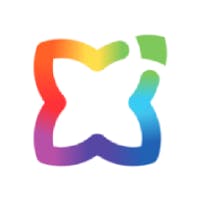Imagine if your learner could discover their personal motivation without the pressure of examinations. Or even homework.
Imagine if they could reach their goals not through an archaic checklist of courses to complete and graduation requirements to meet but by a unique path that they designed themselves?
Learnlife's unique approach allows learners to create their own path and measure their own learning through assessments that are more rewarding and meaningful than standardised exams.
Learn more about our Pathways to Possibilities programme, how it works, and what learners think of our approach in the video below.
You can read the transcript below.
Stephen Harris: The Pathways to Possibilities Program is in essence our way of enabling any learner to follow a pathway to what they need in terms of getting to where they wish to go. And in the context of Learnlife, that could be any country, any university, any employment, any career. So, therefore, the focus shifts off the content and onto teaching the skills of self-directed learning, so that once they've gained that autonomy, then there's no limit.
Joyce Mininger: What strikes me as so powerful in the work of the learners at the Urban Hub is that they are truly motivated without grades and without assessments.
Anastasia: The freedom we get is much different than from traditional school and the fact that it's based on projects instead of exams really gives the freedom to the students to discover their passions and work in what they actually want to work on.
Alex: So I think that's one of the most important things during this does. They give you the opportunity and the space to really express who you are, and I think that based on that, you can really move forward in any direction you want.
Stephen: By taking the focus off studying for a narrow range of content for a particular exam, but opening it up to where does a learner wish to go once they've left Learnlife, we can help them learn the content that's relevant to them alone, given their pathway.
Joyce: We use a competency-based model knowing that is the most reflective of real-world skills that learners need as they enter the workforce or different job markets.
Nicole Fuchs: It starts with the learner, and it's a bit of a standard structure. They each have a personal learning plan where they choose the different classes that they're going to attend and also the different competencies that they're going to get within a cycle. A cycle is how we call the term. And it's back-ended by our competency tracker, and that tracks all the competencies that they are acquiring over the cycle.
Mich López: It's really important for us that when they leave Learnlife, they have not only acquired knowledge or they've grown their skills, but at the same time they've also grown their capacity to overcome blockers or to identify how they can grow.
Stephen: We've always wanted to share our experience with other schools and with other educators. If there's going to be a momentum of change around the world, then we have to do that, and it has to be able to scale. One of the reasons why we look at a program like HundrED or we create our own workshops like Inspire is because we have to find as many ways to share the message to say there are alternatives to examinations and as we share our ability to facilitate that then we hope that educators from all around the world can see that there are so many more pathways that we should be opening up for learners in any country no matter where they are.


